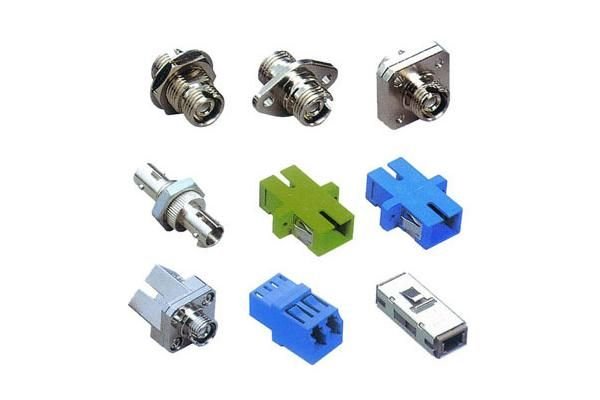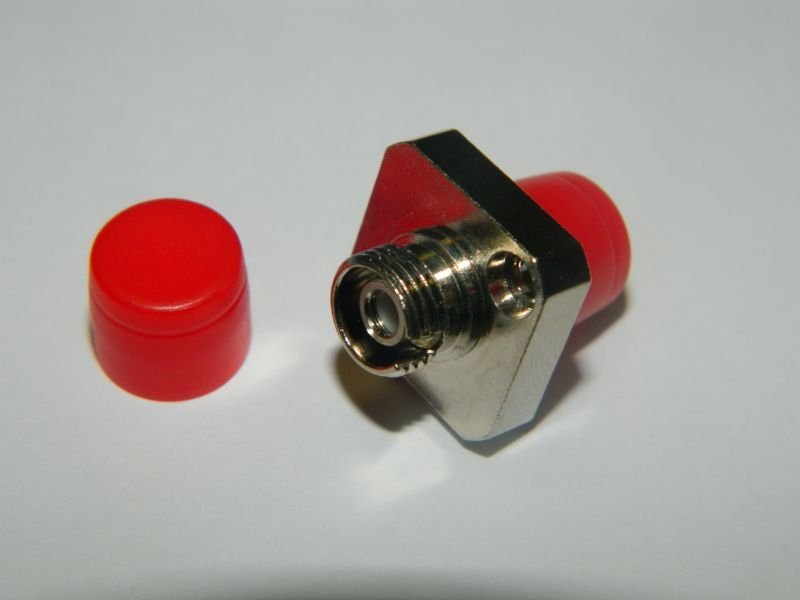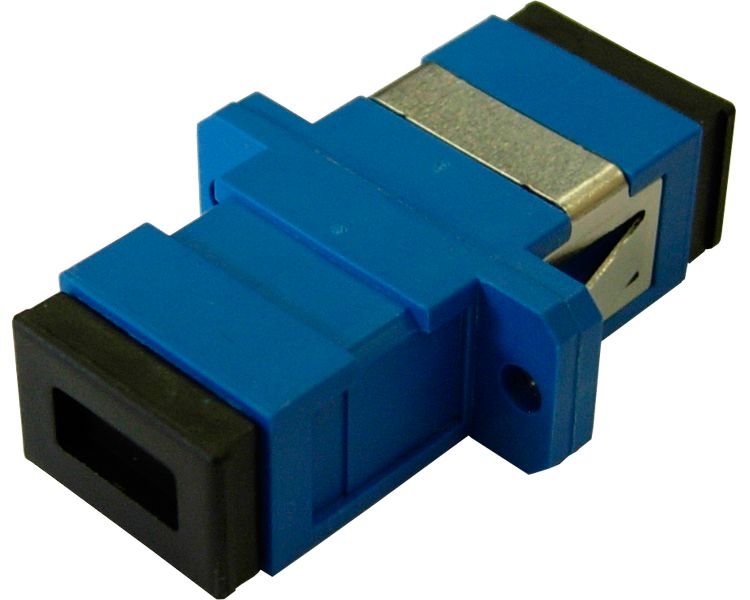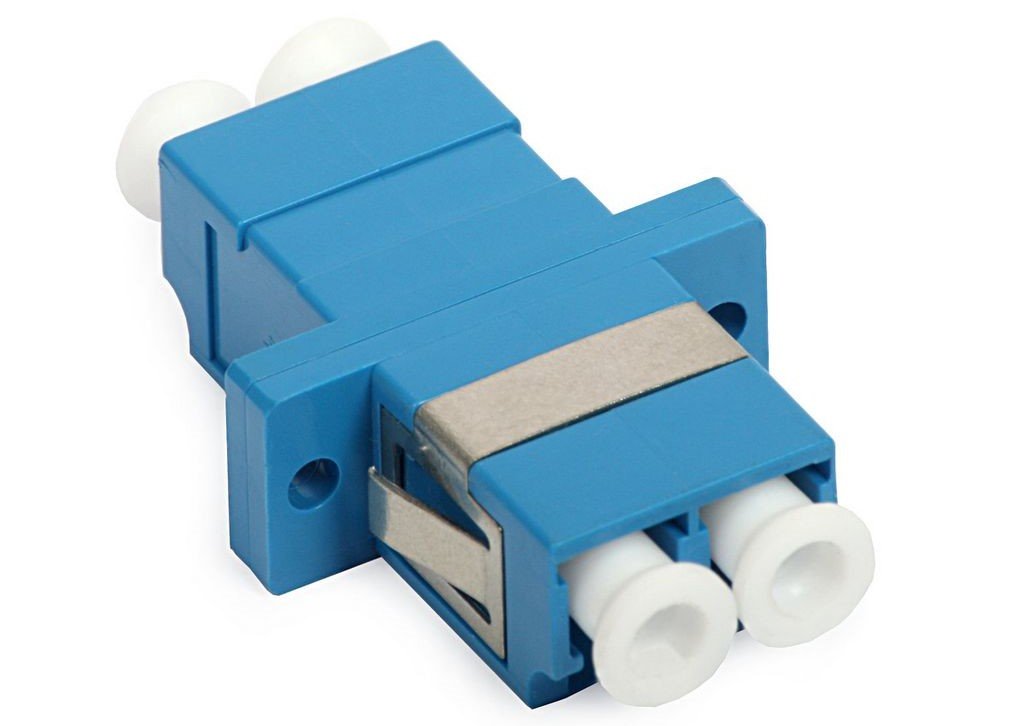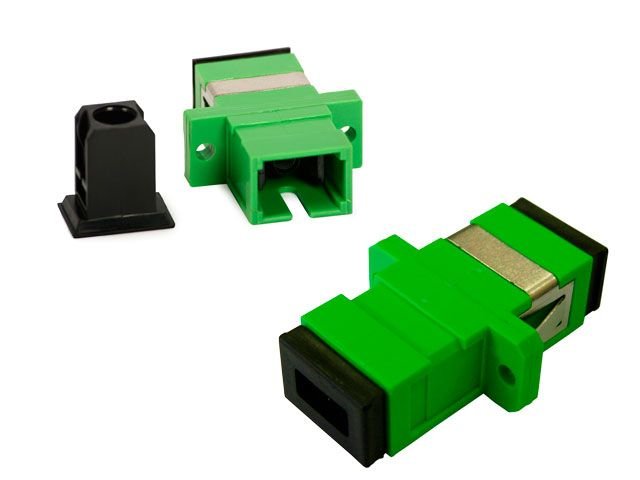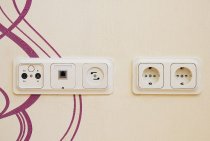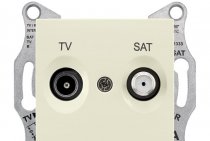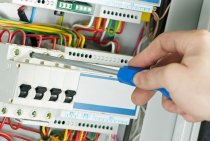An optical socket is a block device that is used to connect fiber optic cables. Another name for such an outlet is an adapter.
The use of such devices ensures the reliability of the detachable connection and, as a result, the high quality of the transmitted signal. Adapters are widely used in the installation of fiber optic networks. These devices are used in computer and audio networks to connect optical boxes.
It should be noted that, due to the extremely small thickness of optical fibers, their connection is a rather technically difficult task. A fiber shift as small as 1 micron can result in significant loss of signal strength. Therefore, the stability of the equipment operation largely depends on the quality of the connecting devices.
Classification
Today, manufacturers of equipment for fiber optic networks offer an extremely wide range of such devices.
The main features by which these sockets can be classified are:
- Appointment. Distinguish between connecting and adapter adapters. Their main difference is the type of connected connectors. If it is necessary to connect devices of the same type, a connection adapter is used. Connection of connectors of various types is carried out using a transition adapter. There are also optical sockets, the purpose of which is the temporary connection of bare fibers. Such devices are mainly used for testing various types of optical equipment. At the same time, to ensure a reliable connection of fiber optic lines, it is enough to insert them into the adapter and press the special latch.
- Characteristics of the centralizer.
- Connector type. To date, the most widespread are SC, LC, ST, as well as FC adapters.
- The number as well as the location of the optical poles. Adapters that include one connector are called simplex, devices with two connectors are called duplex.
- The maximum number of switching operations guaranteed by the manufacturer.
Adapter design
The adapter design includes the following main elements:
- Product body. Made from plastic or metal.
- Centralizer (centering sleeve). This part of the design is the main element of the adapter, it is designed to connect optical fibers. The centralizer is a metal or ceramic tube, the quality of which depends on the reliability of the connection of optical connectors. Products made of ceramics based on zirconium dioxide have the highest reliability.
- Fasteners.
Single-mode optical sockets are in most cases equipped with ceramic centralizers. Multimode - bronze centralizers.
The most common optical socket standards
Ferrule Connector
An optical socket of this type is able to provide the maximum quality of the connection. This allows the use of FC adapters in the most important networks. Such sockets are distinguished by the high quality of the material from which they are made. Thanks to special grooves and a spring-loaded connection mechanism, maximum reliability of a fixed connection is achieved. In addition, the movement of the contacts does not affect the quality of the connection.
Fixation of connectors is provided by twisting. The design of this type of adapter includes a ceramic cylinder with guides, with the help of which maximum accuracy is achieved in connecting connectors.
The disadvantage of this standard is the need for additional free space for screwing in and out of the connector. This quality does not allow the use of FC sockets with a dense arrangement of contacts.
Subscriber Connector
Such an optical socket is in many ways similar to products of the previous type. The main external difference is the square shape of the plastic case of such an adapter.
A latch is used to secure the connectors. One of the advantages of SC adapters is their relatively low cost compared to products of the previous type. The quality of the transmitted signal can be affected by touching the connector.
Lucent Connector (LC)
This type of product resembles an SC device, but is much smaller. This allows the use of such connectors in places with dense cabling, such as server rooms or offices.
Adapter markings
Optical sockets are marked as follows: AA/BB/CC-DD.
AA - connector standard (two types of connector are indicated for adapters).
BB - type of polishing. This parameter must be taken into account when making optical fiber connections. For example, connectors with an APC finish cannot be compatible with devices that have a different finish.
SS - type of fiber (single or multimode).
DD - connector type.
To connect the fiber optic line to the adapter, a connector is used, which terminates the optical cable, pigtail or patch cord.
- A pigtail is a fiber optic cable terminated with a connector on one side only.
- The patch cord ends on both sides. In this case, the types of connectors on both sides can be different.
The type of connector is one of the determining factors when choosing an optical outlet.
Its tip is made of high-strength cermet. In the center of the tip there is a hole for attaching the optical fiber. Extreme care must be taken when operating such devices. Even damage to the connector tip that is invisible to the naked eye can lead to a significant deterioration in the quality of the transmitted signal.
One of the most important properties of any element of fiber-optic networks is the attenuation it introduces into signal transmission. The constant improvement of the design of adapters is mainly aimed at reducing this parameter. Thanks to the use of zirconium ceramics, as well as the high quality of the detachable connection, it is possible to reduce the attenuation to 0.2 dB. For short-distance networks, the use of optical sockets is not critical and has little effect on the quality of the transmitted signal. However, for networks that are characterized by long signal transmission distances, performance degradation may be unacceptable.
Another important characteristic is the temperature range in which the adapter can operate. For modern devices, this figure ranges from -40 to + 75C0.
To ensure the normal operation of optical sockets, special attention should be paid to their timely maintenance. The ingress of dust and moisture into such devices can significantly reduce the power of the transmitted signal, lead to loss of its quality, back reflections, etc. To prevent such consequences, sockets must be regularly blown with compressed air.

